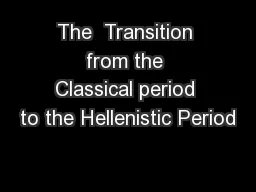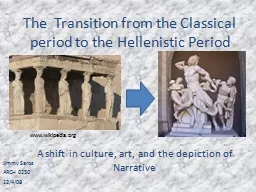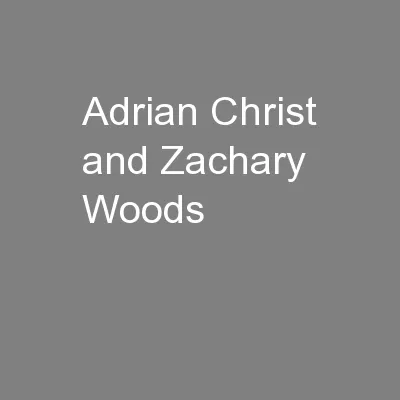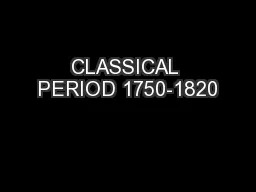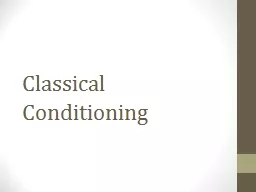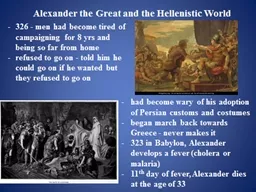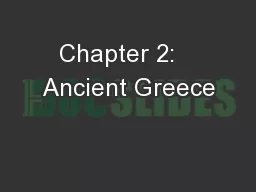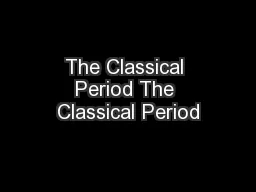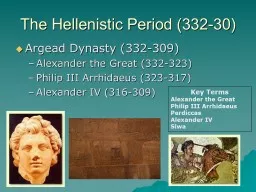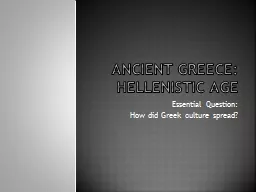PPT-The Transition from the Classical period to the Hellenistic Period
Author : liane-varnes | Published Date : 2018-11-03
Jimmy Saros ARCH 0250 12408 A shift in culture art and the depiction of Narrative wwwwikipediaorg Classical Greece Split up into City States Said to be the foundation
Presentation Embed Code
Download Presentation
Download Presentation The PPT/PDF document "The Transition from the Classical perio..." is the property of its rightful owner. Permission is granted to download and print the materials on this website for personal, non-commercial use only, and to display it on your personal computer provided you do not modify the materials and that you retain all copyright notices contained in the materials. By downloading content from our website, you accept the terms of this agreement.
The Transition from the Classical period to the Hellenistic Period: Transcript
Download Rules Of Document
"The Transition from the Classical period to the Hellenistic Period"The content belongs to its owner. You may download and print it for personal use, without modification, and keep all copyright notices. By downloading, you agree to these terms.
Related Documents

